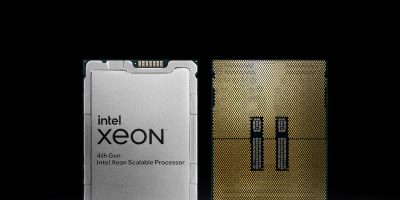Intel optimises fourth general Xeon Scalable processors for data centre power
The fourth generation Intel Xeon Scalable processors are Intel’s most sustainable data centre processors, said the company. They have a range of features for optimising power and performance, to help achieve customers’ sustainability goals, said Intel.
Code-named Sapphire Rapids, the Xeon processors are claimed to have the most built-in accelerators of any CPU available today, making them suitable for AI, analytics, networking, security, storage and high performance computing (HPC) applications.
Compared to earlier generations, they increase performance per Watt efficiency by a factor of 2.9, using built-in accelerators, to save up to 70W power per CPU in optimised power mode with minimal performance loss, said Intel. This equates to between 52 and 66 per cent low total cost of ownership (TCO).
The number of built-in accelerators means that the fourth generation Xeon processor needs less additional discrete acceleration.
The new optimised power mode can deliver up to 20 per cent socket power savings with a less than five per cent performance impact for selected workloads. Innovations in air and liquid cooling reduce total data centre energy consumption, added Intel.
The manufacturing process of the processors uses 90 per cent or more renewable electricity at Intel sites with water reclamation facilities.
In AI, and compared to the previous generation, the processors increase PyTorch real time inference and training performance with built-in Intel Advanced Matrix Extension (Intel AMX) accelerators.
The low latency network and edge workloads mean that the fourth generation Xeon processors are “a critical part of the foundation driving a more software-defined future for industries ranging from telecommunications and retail to manufacturing and smart cities,” said Intel. For 5G core workloads, the built-in accelerators help increase throughput and decrease latency, while the processors’ power management enhances both the responsiveness and the efficiency of the platform, Intel added.
Compared to earlier generations, they deliver up to twice the virtualised radio access network (vRAN) capacity without increasing power consumption. This enables communications service providers to double the performance-per-Watt to meet critical performance, scaling and energy efficiency needs.
The latest Xeon processor combines up to four Intel 7-built tiles on a single package, connected using Intel EMIB (embedded multi-die interconnect bridge) packaging technology. It delivers increased memory bandwidth with DDR5, increased I/O bandwidth with PCIe5.0 and Compute Express Link (CXL) 1.1 interconnect.




